This study aims to analyze and evaluate the relationship between Body Mass Index (BMI) and writing skills among children in primary education, aged 8 to 10 years. It focused on analyzing the differences in demographic and physiological characteristics among four groups of children. The methodology relied on assessing the writing skills of a sample of 395 children with diverse demographic characteristics using approved assessment tools. Accuracy, speed, coordination, and pen control skills were assessed, and the regression relationship between these skills and BMI was studied. The results indicated a negative relationship between BMI and writing skills in general: the higher the BMI, the lower the writing skills. The results also showed that age, gender, and right- or left-handed pen use were not statistically significant variables, despite slight differences in age and the ratio of females to males. The correlation coefficient for the sample that underwent the experiment, which had an average BMI of 16.9 (i.e., between thinness and normal weight), had an average value of 55%. However, from the linear regression analysis, it became clear that the correlation coefficient reached 98%, indicating a strong negative correlation. As for the value of \(p = 0.038\), which is less than the threshold value of 5%, the results obtained are highly significant. The coefficient of variation was large, meaning that the data show statistical differences and significance that can explain the phenomenon. This emphasizes the need for deeper analysis to understand the factors associated with BMI and their impact on health and growth.
The relationship between fine motor development and handwriting skills is a significant area of interest that has been examined in numerous previous studies. Handwriting skills in children, particularly during the primary education years, are essential for academic achievement and overall educational development [1]. Fine motor skills play a critical role in enabling students to perform tasks such as handwriting with precision and control. Through this study, which aims to identify and evaluate the relationship between body mass index (BMI) and handwriting skills in primary school children, we build upon prior research suggesting a connection between general motor abilities and handwriting proficiency. Enhanced motor abilities are typically associated with improved writing performance. At the same time, motor abilities are influenced by body weight, with BMI serving as a key indicator. Physical and mental health are closely linked to BMI, and children with obesity often experience reduced fine motor control due to excess body weight [2]. Moreover, such children may also face bullying or psychological distress, which can adversely affect their mental health and overall academic engagement [3].
The importance of this study lies in its illumination of a new dimension in the relationship between physical health and academic performance. Unlike most prior investigations that employed either review-based or systematic methodologies, this research utilizes a direct and applied approach through validated assessment tools to evaluate handwriting skills. By collecting and analyzing both BMI data and handwriting performance metrics from a sample of students and conducting targeted writing assessments, this study ensures data-driven, unbiased results. Consequently, the findings provide a fresh perspective on how physical well-being correlates with academic outcomes. Additionally, this study offers practical insights for professionals in occupational therapy and educational development, as well as for researchers interested in the interaction between fine motor development and academic indicators such as BMI. It highlights the interdependency between writing skills and the broader domain of fine motor coordination, which is significantly influenced by children’s physical health.
The research problem originates from the limited scope of existing literature on this topic, particularly within the Arab region, making the subject largely underexplored in local contexts. Furthermore, the few available studies often lacked an applied research component or failed to examine the issue comprehensively. Many neglected to identify both implicit and explicit factors affecting the relationship between physical health, micro-metabolic development, mental well-being, and handwriting skills, all of which ultimately influence academic performance in primary school children. In several cases, existing research lacked reliability or objectivity—being either purely theoretical or methodologically biased in terms of data collection and result interpretation.
This study is founded on two principal hypotheses: first, that there is a statistically significant relationship between BMI and handwriting skills; and second, that an increase in BMI is associated with decreased efficiency in fine motor skills, which are essential for handwriting. The study also rejects the null hypothesis that asserts no relationship between BMI-related motor skills and handwriting abilities. These hypotheses enable a reevaluation of the role physical factors play in shaping academic performance and writing skills. Furthermore, they facilitate a detailed analysis of the nature of this relationship—whether strong or weak, positive or negative—between BMI and children’s handwriting performance.
This section presents a literature-based exploration of the theoretical background and core concepts relevant to the study. It also includes a critical analysis of significant prior research, highlighting oth strengths and weaknesses. The literature review allows readers to gain a deeper understanding of the study’s methodology, objectives, significance, and findings, providing a comprehensive context for the research.
Fine motor skills evolve alongside brain development, muscle growth, and nerve maturation. Any disruption in these developmental areas—whether neurological, muscular, or due to external factors—can impair these skills. This may lead to diminished motor flexibility and directly affect fine motor-dependent activities such as handwriting. Writing requires nuanced control, including pen grip, shaping letters, and spatial alignment, which are dependent on coordinated physical and cognitive abilities [4]. Therefore, any skill involving precise muscle-nerve coordination, such as handwriting, is highly susceptible to disruption if neurological or muscular development is impaired. Handwriting encompasses eye-hand coordination, auditory and visual processing, muscle control, and motor memory [5].
A clear understanding of basic study concepts is essential for grasping the research objectives and importance. Establishing connections—whether implicit or explicit—among the study’s concepts aids in comprehending how each concept informs the others. This conceptual clarity helps the reader understand the rationale behind the study’s methodology, the resolution of its research problem, the interpretation of findings, and the subsequent recommendations [6]. Key concepts include:
Body Mass Index (BMI): BMI is calculated by dividing a person’s weight in kilograms by the square of their height in meters. It is commonly used to assess whether an individual is underweight, of normal weight, overweight, or obese. In children, it serves as an indicator of both physical and mental health during developmental stages [7].
Fine Motor Skills: These are the abilities that enable precise movements and involve coordination between the brain and muscle-nerve pathways. Fine motor skills influence balance and flexibility and are linked to overall motor development. Obesity may impair flexibility, coordination, and postural control, all of which are essential for tasks like gripping a pen and executing handwriting movements.
Handwriting: Handwriting is a complex skill requiring coordination among various sensory systems—such as visual, auditory, and tactile input—and the child’s muscular control and motor memory. This process relies on synchronized functioning of sensory perception, cognitive planning, and muscular execution. Any impairment in these coordinated processes typically results in compromised handwriting ability [8].
Executive Functions of the Brain and Their Relationship to the Muscular System: Much like muscles, the efficiency of the nervous system diminishes with underuse and is vulnerable to damage with overuse. When muscle sensors send signals to the brain, the brain interprets these signals and sends commands to execute motor actions. The strength and flexibility of muscle function are directly influenced by brain activity and physical health, both of which are related to BMI. Excess weight can disrupt motor development and impair executive functions essential for tasks such as writing [9].
Several previous studies offer insights into the relationship between BMI and motor performance, though many have limitations. One study found a weak correlation between BMI and fine motor skills but did not focus specifically on handwriting. The study was robust in terms of sample size, but its use of general assessment tools reduced its specificity and relevance to handwriting [10]. Another study examined the effects of obesity on motor performance and provided evidence supporting a negative impact. However, this research was restricted to gross motor skill assessment, overlooking fine motor capabilities [11]. A further study employed a specialized test to evaluate handwriting skills but failed to consider BMI as a contributing factor, thereby limiting its comprehensiveness [12].
The executive functions of the brain and their relationship to the muscular system are illustrated in Figure 1.
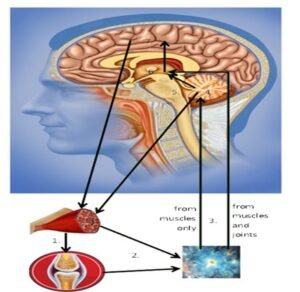
This study employed a comprehensive quantitative analytical methodology as its principal research approach. A sample of 100 male and female students from the primary education stage was selected to evaluate the relationship between Body Mass Index (BMI) and handwriting skills. Data collection involved measuring weight and height to calculate BMI, administering standardized handwriting assessments, and evaluating fine motor skills. Multiple methodological approaches were integrated to ensure rigorous analysis and credible findings. These included: the descriptive methodology for outlining and summarizing key data and observations; the quantitative methodology for precise data collection; the analytical methodology for interpreting results; and the comparative methodology for evaluating differences across data sets. Statistical tools were applied to test hypotheses, assess variable correlations, and draw meaningful conclusions from the data [13].
The applied framework guiding the study outlines the systematic steps taken from the initial formulation of the research question to the final evaluation of results. It begins with the identification of the study’s goal and the articulation of the research problem. This was followed by extensive data collection from a variety of sources, including online databases, books, academic journals, educational websites, and expert consultations. The subsequent stage involved the design of the experiment, which included selecting the most appropriate tools and methodologies, determining the sample population, and conducting the actual data-gathering process.
The experiment itself focused on the evaluation of handwriting skills using established assessment instruments, accounting for a range of BMI values and ensuring data diversity to strengthen result validity. All collected data were recorded, subjected to statistical analysis, and rigorously evaluated to generate conclusions and formulate evidence-based recommendations. The complete applied framework that directed the study process is illustrated in Figure 2.
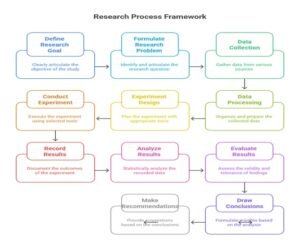
The experimental design was executed through a series of structured stages:
Body Mass Index (BMI): BMI was calculated by measuring each participant’s weight (in kilograms) and height (in meters) using the formula: \[\text{BMI} = \frac{\text{Weight (kg)}}{\text{Height (m)}^2}\]
Handwriting Skills: Handwriting was assessed using standardized instruments such as the Evaluation Tool of Children’s Handwriting (ETCH) and the Minnesota Handwriting Assessment. These tools allowed evaluation of:
Speed [14]
Accuracy
Consistency
Pen control
Spatial organization
Participants: A total of 376 male and female students were included, with attention paid to maintaining gender diversity.
BMI Classification: Participants were categorized based on their BMI into four groups: thin, normal, overweight, and obese.
Diversity of School Settings: Schools were chosen from a range of socioeconomic backgrounds to ensure that the sample was representative of various social groups and contexts.
To begin the experimental procedure, the height and weight of each participating child were carefully measured using calibrated equipment. These measurements were used to calculate the Body Mass Index (BMI) for each child, applying the standard formula \(\text{BMI} = \frac{\text{Weight (kg)}}{\text{Height (m)}^2}\).
Following the BMI assessment, standardized handwriting tests were administered to each participant individually. All assessments were conducted in a quiet, distraction-free environment to ensure optimal concentration and to minimize any external variables that could influence performance. This controlled setting was intended to enhance the reliability and validity of the handwriting evaluations.
The statistical analysis for this study was conducted using specialized software, including SPSS and Microsoft Excel, which are recognized as essential tools for analyzing quantitative data and determining the strength and nature of statistical relationships. Several key statistical methods were employed to test the hypotheses and interpret the data.
First, Pearson’s correlation coefficient (\(r\)) was used to assess the strength and direction of the linear relationship between two continuous variables, specifically Body Mass Index (BMI) and handwriting skills. This coefficient ranges from \(-1\) to \(+1\), where values closer to \(-1\) or \(+1\) indicate stronger correlations. The formula for Pearson’s correlation coefficient is given by:
\[r = \frac{n\sum xy – (\sum x)(\sum y)}{\sqrt{\left[n\sum x^2 – (\sum x)^2\right] \left[n\sum y^2 – (\sum y)^2\right]}}\]
where \(n\) is the number of paired observations, \(\sum xy\) is the sum of the products of the paired values, \(\sum x\) and \(\sum y\) are the sums of the \(x\) and \(y\) values respectively, and \(\sum x^2\) and \(\sum y^2\) are the sums of the squares of the \(x\) and \(y\) values.
Second, analysis of variance (ANOVA) was used to evaluate the differences between multiple BMI categories in relation to handwriting performance. This test determines the statistical significance of the differences between group means, as reflected by the F-statistic and the associated p-value. A threshold value of 0.05 was adopted for statistical significance. A p-value below this threshold indicates that the observed differences are unlikely to have occurred by chance.
Third, multiple linear regression analysis was employed to model the relationship between BMI and various dimensions of handwriting performance, including speed, accuracy, and flexibility. The regression equation used in this analysis is:
\[Y = \beta_0 + \beta_1 X_1 + \beta_2 X_2 + \cdots + \beta_p X_p + \varepsilon\]
In this equation, \(Y\) represents the dependent variable (handwriting performance), \(X_1, X_2, \ldots, X_p\) denote the independent variables (BMI and other factors), \(\beta_0\) is the intercept, \(\beta_1, \beta_2, \ldots, \beta_p\) are the regression coefficients that quantify the effect of each independent variable, and \(\varepsilon\) represents the error term accounting for unexplained variation.
Finally, hypothesis testing was carried out to determine the statistical validity of the findings. Two mutually exclusive hypotheses were formulated: the null hypothesis (\(H_0\)), which posits that no significant relationship exists between BMI and handwriting performance, and the alternative hypothesis (\(H_1\)), which posits that such a relationship does exist. For example, \(H_0\): there is no correlation between a child’s BMI and handwriting performance; \(H_1\): there is a correlation between a child’s BMI and handwriting performance. The rejection or acceptance of the null hypothesis was based on the results obtained from the statistical tests and the corresponding p-values.
This comprehensive statistical approach ensured a rigorous examination of the data, enabling reliable conclusions to be drawn regarding the relationship between body mass index and handwriting skills in children.
Table 1 presents the statistical summary of four groups of primary school children with respect to age, handedness, and Body Mass Index (BMI). In terms of age, Groups 1 and 2 shared a similar mean of approximately 8.3 years, whereas Groups 3 and 4 had a higher average age of around 9.45 years. A one-way ANOVA test indicated a statistically significant difference in age among the groups (\(F = 3.2, p = 0.038\)), suggesting that the variation in age is unlikely to be due to random chance. Although the age gap is relatively small—approximately one year—this difference could be relevant when considering variables linked to neurological and motor development.
Regarding handedness, the majority of children in all groups were right-handed, ranging from 90% to 96%, with minor variations in the proportion of left-handed individuals. These differences were not statistically significant and appear consistent with typical distributions in the general population.
As for BMI, Groups 3 and 4 exhibited slightly higher mean values compared to Groups 1 and 2. Group 1 also displayed the largest standard deviation, indicating a wider spread in BMI values. However, the statistical analysis did not confirm whether these differences in BMI were significant, as no specific test for BMI variance was reported. Hence, no definitive conclusions can be drawn about BMI disparities among the groups. Overall, while age differences were statistically significant, handedness showed minimal variation, and BMI differences remained inconclusive in terms of significance.
Figure 3 illustrates the gender distribution among the total study participants. The sample comprised 47% females and 53% males, reflecting a balanced representation across genders.
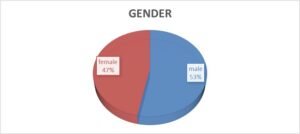
Figure 4 shows the demographic characteristics of the study sample in terms of using the right or left hand in writing. The figure shows that the majority of students use their right hand in writing, with a percentage ranging from 90 to 92%, while the percentage of students who use their left hand ranged from 8 to 10%. Figure 5 shows the demographic characteristics of the four groups from 8 to 10 years old, where the average age ranged from 8.27 to 9.5 years, with a standard deviation ranging from 3 to 5 years, while the BMI ranged from 16.07 to 17.4. Table 2 shows the classification according to the WHO classification of body mass index (BMI) measurement and the Z-SCORE index. There were six levels of classification: very thin, thin, normal weight, overweight, and then obesity [13]. Table 3 shows the classification of students according to the BMI index and the Z-SCORE index for four groups, each group separately, and then for the total sample on which the test and writing skills were conducted. It is clear from the table that the highest index was for the fourth group, reaching 17.4 for the BMI, and the lowest index was 16.07 for the third group, while the Z-SCORE index had the highest value for the second and fourth groups, with a value of 0.64, and the lowest value for the first and third groups, with a value of 0.18. As for the general total, the average BMI index for the total sample was 16.9, which means that most of the children were between the thinness and normal weight limits, while the Z-SCORE index for the total sample was 0.25.
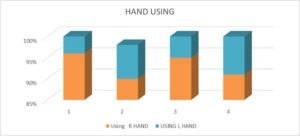
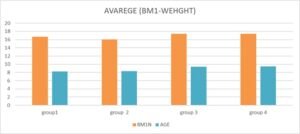
| Classification | Z-Score | BMI |
|---|---|---|
| Extremely thin | Less than -3 | Less than 16.0 |
| Thin | -3 to less than -2 | Moderately underweight 16.0 – 16.9 |
| Normal weight | -2 to +1 | Slightly underweight 17.0 – 18.4 |
| Overweight | +1 to +2 | Normal weight 18.5 – 24.9 |
| Obesity | +2 to +3 | Overweight 25.0 – 29.9 |
| Extreme obesity | Greater than +3 | Severe obesity (Grade 3) 40.0 and above |
Table 4 shows the regression relationship between writing skills such as accuracy, speed, coordination, and pen control and the body weight index BMI. It is clear from the table, and for the four groups separately, that the accuracy index ranged from 79 to 82%, and the total accuracy index for the sample that includes all students, both males and females, was 81.75%, while the speed index was between 43% and 45%, with an average of 44.5% for the total sample. The coordination index ranged from 75% to 80%, with an average of 79%. As for the pen control index, the percentage ranged from 12.4 to 14.6, with an average of 13.2. This illustrates the extent of variation in the results. As for the P-VALUE, which exceeded the threshold value of 5%, the value reached 0.002, which means that the data is highly significant, and the coefficient of variation is very large, which means that the variation can explain the results and that the data is statistically significant [6].
| GROUP | Z-Score | BMI | Classification |
|---|---|---|---|
| 1 | 0.18 | 16.7 | Thin |
| 2 | 0.64 | 17.4 | Normal weight |
| 3 | 0.18 | 16.07 | Thin |
| 4 | 0.64 | 17.4 | Normal weight |
| TOTAL | 0.25 | 16.8925 | THIN- Normal weight |
| Group | BMI | Accuracy | Speed | Coordination | Pen Control | F | P-Value |
|---|---|---|---|---|---|---|---|
| 1 | 16.7 | 82 | 45 | 80 | 13.2 | 17.8 | 0.002 |
| 2 | 17.4 | 78 | 42 | 76 | 12.4 | ||
| 3 | 16.07 | 88 | 48 | 85 | 14.6 | ||
| 4 | 17.4 | 79 | 43 | 75 | 12.6 | ||
| Total | 16.89 | 81.75 | 44.5 | 79 | 13.2 |
Figure 6 illustrates the linear relationship between Body Mass Index (BMI) and the average assessment of writing skills, including accuracy, speed, coordination, and pen control, for the sample on which the test was administered. As the test was conducted on a group of children classified as being between underweight and normal weight, the observed relationship in the figure is clearly negative. This inverse relationship is expected, although it appears relatively weak, likely due to the fact that the participants generally fall within the range of normal motor development and weight status. Nonetheless, the overall trend indicates that an increase in BMI corresponds to a decrease in writing skills. As evident in the figure, the difference between the actual values of the results obtained and the expected values is minimal, reflecting the accuracy and reliability of the findings. The closeness of the actual and expected values demonstrates that the data are consistent and support the validity of the linear relationship being analyzed. Figure 7 presents the probability density function (PDF) for the dataset under study. Upon close examination of the figure, it becomes evident that the distribution of the data approximates a normal distribution, suggesting that the data are generally well-behaved and symmetrical around the mean. However, the presence of a few outlier points that deviate from the main distribution curve is also noticeable. These anomalies could potentially be attributed to errors during the data collection phase, inaccuracies in measurement, or inconsistencies introduced during the data processing stage. Although such deviations are not uncommon in empirical data, their implications should be considered carefully, particularly in statistical modeling and hypothesis testing. Table 6 summarizes the results obtained from testing the hypotheses related to the influence of Body Mass Index (BMI) on writing proficiency and the presence of sarcoidosis-related indicators. For Hypothesis H1, which posits that writing proficiency is significantly affected by BMI, the analysis yielded strong empirical support. Specifically, the regression coefficient (beta) was found to be 0.3, accompanied by a t-value of 4.25 and an exceptionally low p-value of less than 0.0001. These results collectively indicate a highly statistically significant and robust positive relationship between BMI and writing skill, implying that variations in BMI are meaningfully associated with corresponding variations in handwriting proficiency among children. In contrast, Hypothesis H2, which assumes that there is no relationship between BMI and writing proficiency, is not supported by the statistical evidence. This is reflected by a higher beta value of 4.3, but with a substantially lower t-value of only 0.98 and a non-significant p-value of 0.79. These results indicate that the null hypothesis lacks statistical validity, thereby reinforcing the credibility of Hypothesis H1 and confirming the presence of a significant relationship between BMI and writing performance. Moreover, the table also reports standardized regression coefficients, specifically the R and Q values, pertaining to biomarkers associated with sarcoidosis. The coefficients R1 (0.55) and Q1 (0.49) are found to be relatively high, indicating that these variables serve as strong predictors for sarcoidosis presence or progression. Meanwhile, coefficients R2 (0.40) and Q2 (0.21) reflect a moderate and weak correlation, respectively, between autoimmune disease markers and sarcoidosis. These findings highlight the complex and multifactorial etiology of sarcoidosis, suggesting that while certain indicators demonstrate strong predictive capacity, others exhibit weaker associations, underscoring the disease’s possible linkage to a broader range of immune system dysfunctions or inflammatory processes [17].
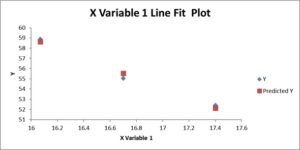
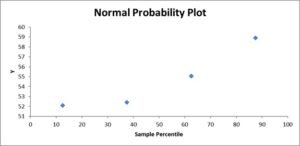
| Skills | r | (P-Value) |
|---|---|---|
| accuarcy | -0.982 | 0.017 |
| speed | -0.985 | 0.015 |
| Coordination | -0.995 | 0.0055 |
| Pen Control | -0.976 | 0.024 |
| total | -0.9845 | 0.015375 |
| Hypotheses | Beta | T-value | P-value | Result | |
| H1 | Writing skills are affected by BMI. | 0.3 | 4.25 | 0.0001 | Supported** |
| H2 | Writing skills had no affected by BMI. | 4.3 | .0.98 | 0.79 | Not Supported** |
| R1 for strong indicator of sarcoidosis | 0.55 | ||||
| Q1 for strong indicator of sarcoidosis | 0.49 | ||||
| R2 for Sarcoidosis → is associated with immune diseases | 0.40 | ||||
| Q2 for Sarcoidosis → is associated with immune diseases | 0.21 | ||||
Through the results of the study that were analyzed to determine and evaluate the relationship between BMI and handwriting skills such as accuracy, speed, coordination, and pen control, some important conclusions can be drawn, such as:
There is a statistically significant relationship between BMI and handwriting skills. The study showed an inverse correlation between BMI and writing skills. The correlation coefficient after assessing writing skills and calculating their averages was 0.98 — meaning that the correlation is both inverse and strong [18].
As for the classifications of the four groups according to the BMI indicators, all groups are characterized as being between thinness and normal weight, and there are no obesity rates. This explains the high rates of handwriting skills, taking into account that children with a high body mass index have clearly lower levels of these skills [19].
There were no differences between the sexes, males and females, except for Viva’s observation that the body mass index for males was slightly lower than that for females, reaching 16.7 for males and 17.4 for females. However, these differences were not statistically significant.
There was a significant difference in fine motor skills according to BMI classification for children with BMIs within the normal range, who showed better performance.
These children outperformed overweight or obese children in accuracy, stability, and muscle coordination.
There were also no statistically significant differences regarding age or writing with the right or left hand [20].
The most important recommendations that can be presented through this study are the following:
Focus on programs that support fine motor skills for overweight children by providing specific, targeted exercises to lose weight and improve writing skills.
It is necessary to include the BMI index assessment among the main and important indicators in early school examinations.
Taking into account individual differences and not using BMI as the sole criterion for evaluation. Although there is a relationship, some children with a high BMI may not experience difficulties, so it is best to evaluate each case individually.
Encourage future research using larger samples and diverse measures of writing to study the relationship more deeply, especially using more accurate digital tools to assess movement and writing.
Focus on fine motor skill support programs for children who are overweight or obese.
Targeted exercises are recommended to improve handwriting, such as hand muscle strengthening activities and eye-hand coordination exercises.
Integrating BMI assessment into early school screenings to identify children with writing difficulties and proactively assist them.
Elran SR, Harel Y, Zoran AR. Fine Motor Skills: Operating standard robotic fabrication as a generative system. Proceedings of the ACM on Computer Graphics and Interactive Techniques. 2023 Aug 16;6(2):1-9.
Kaltenbrunner A, Döhla D, Heim S. The role of rapid automatized naming in children with developmental dysgraphia in German. In Seminars in Speech and Language 2025 May 21. Thieme Medical Publishers, Inc..
Arnawa N, Geria AA, Arsana IG, Dartiningsih MW, Susanta IW. Indonesian language performance of mentally retarded children: Reference for writing literacy text needs. Journal of Language Teaching and Research. 2023 May 1;14(3):701-8.
Rogowska AM, Tataruch R. The relationship between mindfulness and athletes’ mental skills may be explained by emotion regulation and self-regulation. BMC Sports Science, Medicine and Rehabilitation. 2024 Mar 19;16(1):68.
El-Seoud A, Samir M, Al Maadeed S, Saleh M, Ja’am A. An Experience of Using a Handwriting Haptic Device to Fine-Tune the Children Motor Skills. Computer Science. 21.
Katanić B, Veljković AA, Prvulović N, Banjević B, Tomić I. Relationship between Fine motor skills and BMI of preschool children. Journal of Anthropology of Sport and Physical Education. 2022 Jul;6(3):23-6.
Khanna D, Peltzer C, Kahar P, Parmar MS. Body mass index (BMI): a screening tool analysis. Cureus. 2022 Feb 11;14(2):e22119.
Lee AS, Lee LW, Low HM, Ooi SC. Revisiting handwriting fundamentals through an interdisciplinary framework. The Malaysian Journal of Medical Sciences: MJMS. 2022 Feb 23;29(1):18.
Stuss DT. Functions of the frontal lobes: relation to executive functions. Journal of the international neuropsychological Society. 2011 Sep;17(5):759-65.
Wang L, Crawford JD, Reppermund S, Trollor J, Campbell L, Baune BT, Sachdev P, Brodaty H, Samaras K, Smith E. Body mass index and waist circumference predict health-related quality of life, but not satisfaction with life, in the elderly. Quality of Life Research. 2018 Oct;27:2653-65.
Ahmed MM, Al Areefy AA, Alsayegh AA. Does neuro developmental approach of physical therapy have an impact on gross motor and cognitive function of non-obese children with autism spectrum disorder (ASD)? A randomized controlled trial. Journal of Disability Research. 2025 Jan 3;4(1):20240120.
Kim H, Lim DH, Kim Y. Classification and prediction on the effects of nutritional intake on overweight/obesity, dyslipidemia, hypertension and type 2 diabetes mellitus using deep learning model: 4–7th Korea national health and nutrition examination survey. International Journal of Environmental Research and Public Health. 2021 May 24;18(11):5597.
Barros WM, Silva KG, Silva RK, Souza AP, Silva AB, Silva MR, Fernandes MS, Souza SL, Souza VD. Effects of overweight/obesity on motor performance in children: a systematic review. Frontiers in Endocrinology. 2022 Jan 20;12:759165.
Long DM, Conklin J. Handwriting performance of typical second-grade students as measured by the evaluation tool of children’s handwriting-manuscript and teacher perceptions of legibility. The Open Journal of Occupational Therapy. 2019;7(4):1-4.
Uyanık GK, Güler N. A study on multiple linear regression analysis. Procedia-Social and Behavioral Sciences. 2013 Dec 10;106:234-40.
Yusup M, Naufal RS, Hardini M. Management of utilizing data analysis and hypothesis testing in improving the quality of research reports. Aptisi Transactions On Management. 2018;2(2):159-67.
Flores P, Coelho E, Mourão-Carvalhal I, Forte P. Relationships between math skills, motor skills, physical activity, and obesity in typically developing preschool children. Behavioral Sciences. 2023 Dec 7;13(12):1000.
Heslehurst N, Vieira R, Akhter Z, Bailey H, Slack E, Ngongalah L, Pemu A, Rankin J. The association between maternal body mass index and child obesity: A systematic review and meta-analysis. PLoS Medicine. 2019 Jun 11;16(6):e1002817.
Quka N, Selenica R, Quka G, Shore LL. BMI effects on childhood motor skills. Arena-Journal of Physical Activities. 2019(8):11-20.
Vogelezang S, Bradfield JP, Ahluwalia TS, Curtin JA, Lakka TA, Grarup N, Scholz M, Van der Most PJ, Monnereau C, Stergiakouli E, Heiskala A. Novel loci for childhood body mass index and shared heritability with adult cardiometabolic traits. PLoS Genetics. 2020 Oct 12;16(10):e1008718.